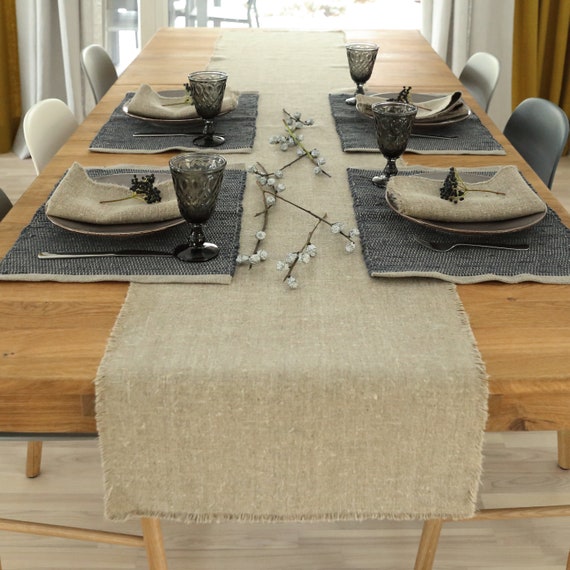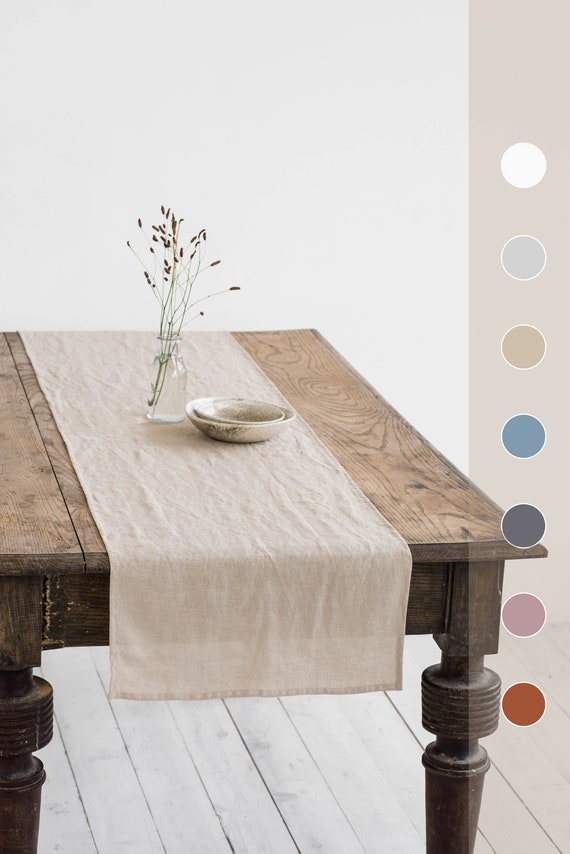Exactly how to Select the Perfect Table Runner for Your Table
Exactly how to Select the Perfect Table Runner for Your Table
Blog Article
Bed Linen Fabric Advancements: Discovering Modern Trends and Creative Applications in Design and Textile Sector
From sustainable production methods to cutting-edge weaving modern technologies, the evolution of linen is reshaping the landscape of the fabric industry. As we delve into the realms of innovative style applications and the development of bed linen blends and hybrid fabrics, a new chapter unravels in which linen's role in future textile developments takes center phase.
Sustainable Practices in Bed Linen Manufacturing
Sustainable practices in linen manufacturing have become significantly vital in the textile sector's initiatives to reduce ecological effect and promote honest sourcing methods. Bed linen, a natural fiber stemmed from the flax plant, uses a variety of advantages such as biodegradability, sturdiness, and breathability. Nonetheless, standard methods of bed linen manufacturing can include substantial water consumption, chemical usage, and energy-intensive procedures.
To attend to these obstacles, numerous fabric manufacturers are embracing lasting methods throughout the linen production procedure. This includes sourcing flax from organic ranches that prevent dangerous pesticides and chemicals, carrying out water-efficient retting techniques to essence fibers from the flax stalks, and making use of green dyes and finishes. Furthermore, some companies are investing in eco-friendly power sources to power their production centers and decreasing waste with recycling and upcycling campaigns.
Technological Advancements in Linen Weaving
With the growing focus on lasting practices in bed linen manufacturing, the fabric sector is now experiencing a rise in technical innovations specifically focused on reinventing the art of bed linen weaving. These technologies are improving the means bed linen fabrics are created, providing boosted efficiency, high quality, and imagination in weaving methods.
Among the vital technological developments in linen weaving is the integration of computerized looms. These sophisticated looms are outfitted with software that permits intricate and elaborate styles to be woven with precision. By digitizing the weaving process, suppliers can accomplish higher uniformity and precision in their linen fabrics.
Additionally, developments in yarn spinning technology have allowed the production of finer and even more sturdy linen threads - table cloths. This causes softer and smoother bed linen textiles that keep their quality also after several uses and cleans
Furthermore, the growth of environment-friendly dyeing processes and coatings for bed linen materials is gaining traction. These sustainable methods not just minimize the ecological impact yet likewise cater to the raising customer demand for ethically produced fabrics.
Creative Style Applications for Linen
Innovative imaginative strategies are increasingly forming the creative style applications for bed linen in the fabric industry. Linen's all-natural visual appeal and ability to mix with other materials make it a favorite option for producing unique garments and devices that provide to the ecologically conscious customer.
Furthermore, developers are trying out bed linen in home decor, utilizing its long lasting and breathable nature to craft fashionable furnishings such as drapes, bedding, click here to find out more and upholstery. The appearance and drape of bed linen bring a sense of sophistication and convenience to interior rooms, adding a touch of elegance to modern-day homes.

Linen Blends and Crossbreed Fabrics

Hybrid materials, on the other hand, take the concept of blending a step further by including extra components such as metallic threads, recycled products, or conductive fibers. These cutting-edge textiles not only broaden the layout opportunities but likewise introduce my review here functional facets like conductivity, antimicrobial properties, or enhanced toughness. Crossbreed textiles are increasingly being utilized in different markets, consisting of style, indoor design, and technological fabrics, where the demand for multifunctional products gets on the rise.
Linen's Duty in Future Textile Innovations

In the world of future fabric innovations, linen is expected to be an essential player in the growth of innovative useful fabrics. Researchers and designers are exploring ways to boost linen's integral high qualities with technological improvements, such as including clever textiles, nanotechnology, and efficiency surfaces. These technologies intend to raise linen's performance qualities, making it appropriate for a broader series of applications, from activewear to protective garments.
Moreover, the combination of linen with other natural or synthetic fibers opens countless opportunities for producing novel textiles with special residential properties and performances. By leveraging linen's attributes and exploring innovative blends, the fabric market is poised to present interesting developments that deal with advancing consumer needs and sustainability needs.
Verdict
In verdict, the exploration of lasting methods, technological innovations, creative layout applications, bed linen blends, and its role in future fabric advancements highlight the continuous evolution of linen material in the modern design and textile industry. With a concentrate on innovation and creativity, the flexibility and eco-friendly nature of linen make it an important material for developers and manufacturers alike, leading the means for further advancements and advancements in the area of textiles.
As we delve right into the worlds of innovative layout applications and the appearance of bed linen blends and crossbreed textiles, a brand-new phase unfolds in which linen's role in future textile innovations takes facility phase.
Checking out the combination of linen with other textiles has led to the introduction of cutting-edge blends and crossbreed fabrics in the contemporary fabric sector. Bed linen blends provide a special mix of the characteristics of linen with those of various other fibers, resulting in materials that possess enhanced buildings such as enhanced toughness, improved draping, and decreased wrinkling.The development of bed linen blends and hybrid fabrics has actually set the phase for Bed linen to play a crucial role in driving future textile developments.In the realm of future fabric developments, bed linen is expected to be a key gamer in the advancement of sophisticated useful textiles.
Report this page